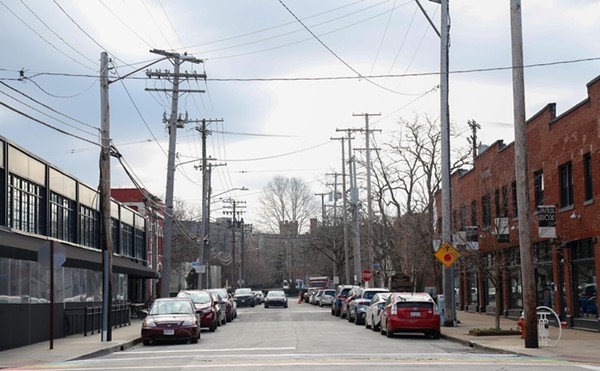The sun was already rising well above Lorain's scant skyline as police officers turned into a vacant parking lot to follow up on a lead the morning of Aug. 8, 1991.
Marsha Blakely, a 22-year-old woman from the neighborhood, had been murdered that night. A group of men stabbed her at least 25 times and ran over her with a car twice. Her body, riddled with "torture-type" wounds, according to reports, was left behind a shopping center off West 21st Street. The discovery seemed uncannily linked to the body of Floyd Epps, found at an apartment building nearby eight hours prior.
Alfred Cleveland, a 21-year-old man known locally for slinging crack around the gray streets of Lorain from time to time, was hanging out in his hometown of New York City.
The days would continue to slip by as police set to work trying to figure out what in the hell happened that night.
Al Cleveland would soon hear of the killings and he would fly out to Lorain, as he did from time to time back then. Scattered neighborhoods in the city were hotbeds of drug activity and Northeast Ohio trafficking and, in good times and in bad, places where Al Cleveland had made a few quick bucks in the past.
It wouldn't be long before police settled on Cleveland, John "Shakim" Edwards, Lenworth Edwards and Ian "Benson" Davis as suspects, all on the back of shady testimony (that would later be recanted) and a hodgepodge of slipshod evidence, police work and prosecutorial actions. All four were convicted in separate trials for the murder.
For more than 15 years now, Al Cleveland has been sitting in the Richland Correctional Institute in Mansfield, sentenced to life in prison, and battling the system through appeals.
Finally, last September, a three-judge panel of the Sixth U.S. Circuit Court of Appeals in Cincinnati offered a ruling that no other court or prosecutorial office had ever touched in this case: "It surely cannot be said that a juror, conscientiously following the judge's instructions requiring proof beyond a reasonable doubt, would vote to convict," based on evidence that was never presented at trial.
Behind bars to this day, Al Cleveland is an innocent man, waiting for his rightful chance for freedom.
***
Sunset Boulevard is a short street in central Lorain with little in the way of overt charm. It lies in the heart of the city, between Westgate Shopping Center where Blakely's body was found and Elmwood Cemetery where Blakely's body is buried.
A man named William Avery Jr. and his father lived on Sunset Boulevard. Marsha Blakely, who cops described as a prostitute and drug addict, lived across the street. So did Floyd Epps' sisters. The neighborhood was small and tight-knit, and open drug use was not uncommon. Avery's father often had crowds of people hanging out around the house, passing the crack pipe and letting the hazy Lorain sun pass overhead. The cops knew all about that, but did nothing to intervene. Avery's father was an inside chum of the department - a paid informant.
Cleveland's story is intertwined with the neighborhood and, in particular, with the Avery family.
The son and his father bear the brunt of responsibility for Cleveland's conviction. The younger Avery also holds the key to any potential freedom. That's because Cleveland's 1996 murder conviction hinged nearly entirely on supposed eyewitness testimony from Avery, who came forward after the murder and described the crime scene to investigators in vivid detail.
Except his story was bullshit, largely concocted by his crack-addled father and the officers of the Lorain Police Department - a department known more for sexual abuse and brutality, per a federal investigation, than any real sense of justice.
In the weeks following the murders, his father confronted him with a plan. His father had certain interests to protect. His relationship with the neighborhood and with the police department formed what became the backbone of Cleveland's future behind bars.
The story they crafted revolved around a debt owed to Cleveland. To clear things up once and for all, Avery's debt took the form of beating Marsha Blakely. But Blakely was a friend from the neighborhood, and there seemed to be no clear motive behind the beating, Avery would say. He told investigators he refused to participate, letting the blame slide far from the doorstep of his family.
Nonetheless, Avery would testify that Cleveland and three other men beat her viciously. Stabbed her. Ran over her with a car. Avery, claiming that he was there, went on to insist that Cleveland took part in and organized the murder.
At the time that Blakely was being brutally beaten in Lorain, however, Cleveland was actually in St. Albans, a neighborhood in the New York City borough of Queens, 500 miles away from the scene of the murders. He was showing off his new BMW 7-Series to friends on Mangin Avenue, and public affidavits prove it.












